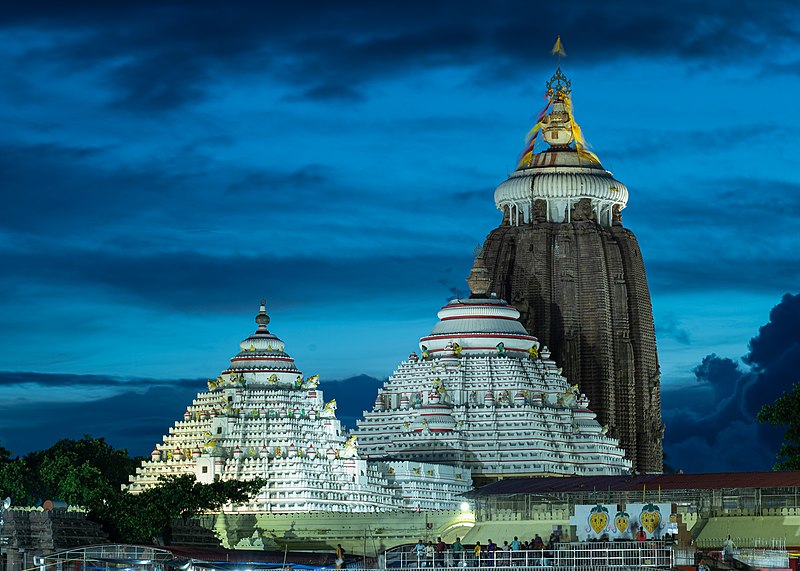Are you planning a visit to the sacred Puri Jagannath Temple in Odisha? This iconic temple dedicated to Lord Jagannath stands as a beacon of spiritual significance, drawing lakhs of devotees and visitors annually. Its historical roots run deep, unveiling tales of devotion and cultural heritage. The awe-inspiring architecture of the temple is a demonstration of ancient craftsmanship and intricate design, offering visitors a captivating glimpse into India’s architectural magnificence.
As you explore its hallowed grounds, you’ll witness ongoing development projects, including the notable Parikrama initiative which was inaugurated recently, contributing to the temple’s continued growth and significance. This comprehensive guide aims to unravel the temple’s past, tell the secrets of its architectural marvels, shed light on the Parikrama project’s importance, and equip you with essential visitor information. Join us on this enlightening journey, and let the wonders of the Puri Jagannath Temple unfold before you.
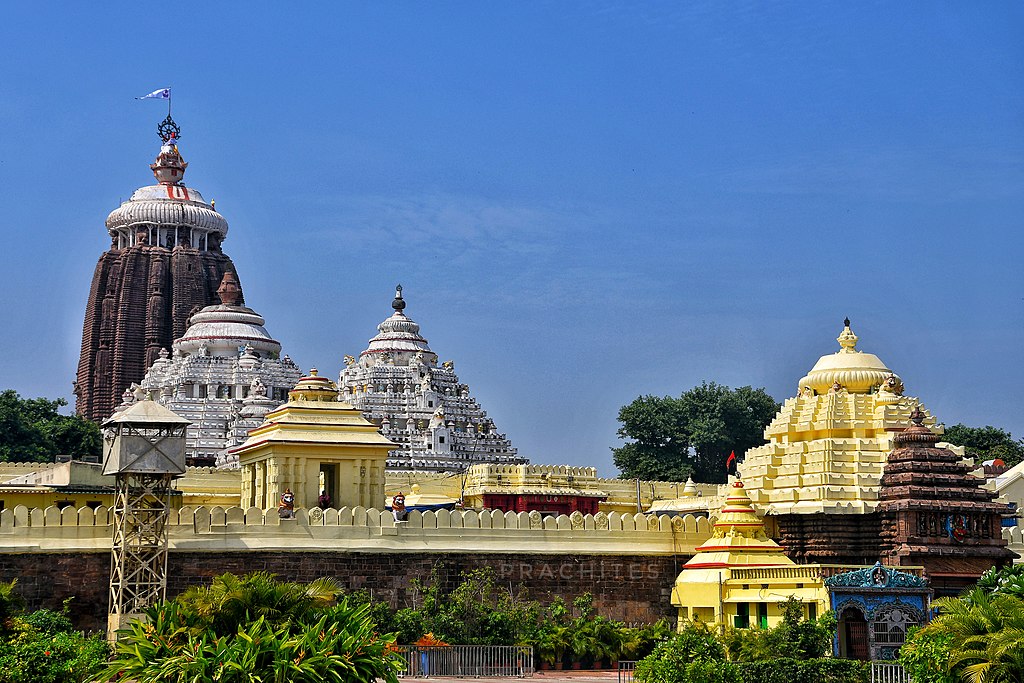
Post Contents
History of Puri Jagannath Temple
The history of the Puri Jagannath Temple dates back to the 12th century when it was constructed under the patronage of King Anantavarman Chodaganga Dev. The temple complex was later completed by King Ananga Bhima Deva. The construction of the temple was a grand endeavor, showcasing the architectural brilliance of the time. The temple has witnessed numerous invasions and renovations throughout its history.
According to legend, the temple’s origins can be traced back to King Indradyumna, who had a vision of Lord Vishnu manifesting as Nila Madhava. After a series of divine interventions, the king was guided to build the temple, and the idols of Lord Jagannath, Balabhadra, and Subhadra were installed in the sanctum sanctorum.
Architecture of Puri Jagannath Temple
The Puri Jagannath Temple showcases the exquisite Kalinga style of architecture, covering an expansive 37,000 square meters within the impressive Meghananda Pacheri wall. The main temple, with its unique curvilinear structure, is adorned with the iconic Nila Chakra, a circular wheel crafted from eight metals.
As you explore the temple complex, you’ll see q number of smaller temples and shrines, each contributing to the overall magnificence of the main temple. Notable features include the Arun Stambha, an ancient monolithic pillar, and the Mukti Mandapa, a platform adorned with intricate carvings The entrance gates, including Singhdwara, Hathidwara, Vyaghradwara, and Ashwadwara, are guarded by statues representing lions, elephants, tigers, and horses, respectively.
These intricate details not only enhance the architectural beauty but also symbolize the temple’s cultural and historical significance, making it a captivating destination for those seeking to delve into the rich heritage of the Puri Jagannath Temple.
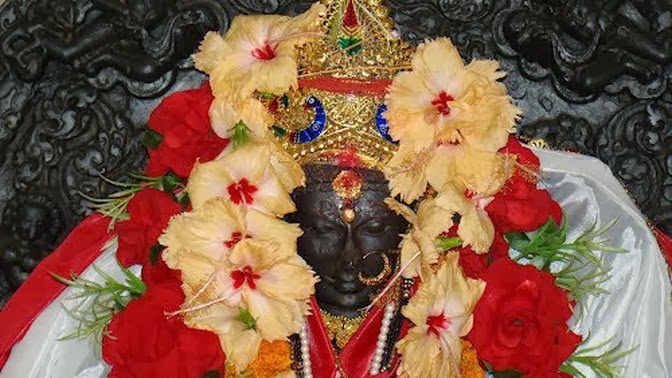
Related Article: Visiting The Magnificent Konark Sun Temple in Odisha
Inside the Puri Jagannath Temple Complex
Within the inner compound, you’ll discover not only the main temple but also several other temples, bije sthalis, and various monuments and structures, as indicated on the temple map in the Record of Rights. Explore the rich diversity of sacred sites and historical elements within this revered complex. Here we have listed a few that you must not miss during your visit to Puri Jagannath Temple.
Vimala Temple–As you explore the inner enclosure of the main temple, you will find Vimala temple facing East. This ancient temple holds the distinction of being the oldest among its peers. The Matsya Purana, Kapila Samhita, Skanda Purana, Tantra Chudamani, and Devi Bhagabata all make references to Maa Vimala. According to Tantra Sastra, Maa Vimala and Shree Jagannatha are revered as Bhairavi and Bhairava.
The goddess’s image is believed to be crafted from Laksa (wax) and features four arms. In her hands, she holds an aksamala (rosary), a human figure, and a kalasa (jar), while her fourth hand is poised in the ‘Varada’ gesture. Recognized as a prominent ‘Shakti Pitha’ in India, this temple sees the offering of Shree Jagannatha’s Prasada to Maa Vimala. Notably, Saradiya Shola puja and special rites are observed annually during the month of Aswaina in this sacred abode.
Satya Narayana Temple–This temple houses a four-armed statue of Shree Narayana. In the upper right hand, there is a disc, while the lower right hand displays the ‘Abhaya mudra’. The upper left hand holds a conch, and the lower left hand wields a mace. The granite statue stands at a height of 5 feet. Jaya and Vijaya stand on both sides, and at the feet of Satya Narayana, Garuda is positioned, kneeling down. The temple is oriented towards the North..
Shree Nrusingha Temple– On the Southern side of the temple within its inner enclosure you come across a shrine dedicated to Nrusingha, facing east. This temple is a Panchratha Rekha Deula without a Jagamohana and predates the construction of the present Shree Mandira. Ancient stone inscriptions adorn the exterior wall of the temple. The main deity of the shrine is Nrusingha, and a diminutive image of the deity is positioned on a lofty seat inside the temple.

Lakshmi Temple– Another very important temple inside the temple complex is Lakshmi temple which is at the North-Western corner of the inner enclosure of the main temple. Tradition holds that a ruler from the Ganga dynasty in the 12th-13th century A.D. constructed the temple. The temple shares a nearly same architectural style with the Jagannatha temple. Within its sanctum, Goddess Lakshmi is venerated. As a form of Gajalakshmi, she holds two elephants in her upper two hands, displaying a four-armed form with the lower hands in the ‘abhaya’ and ‘varada’ postures.
Surya Temple– Located on the Northern side of the Shree Jagannatha temple and facing East, this temple follows a saptaratha plan. The main deity of the temple is Surya, the Sun God. The image of the Sun enshrined in the temple is said to have been transported from Konark by King Narasimha Deva of the Bhoj dynasty (1622-1647 A.D.)
Bata Ganesha Temple–This is a significant temple devoted to Lord Ganesha situated below the Kalpabata within the temple compound. Referred to as the Bata Ganesha temple, it features the image of Ganesha’s vehicle, the mouse, placed in front of the temple. Historical references indicate that in the 16th century, the poet Jagannatha Das would sit beside this temple and recite his Odia Bhagavata compositions to sizable gatherings.
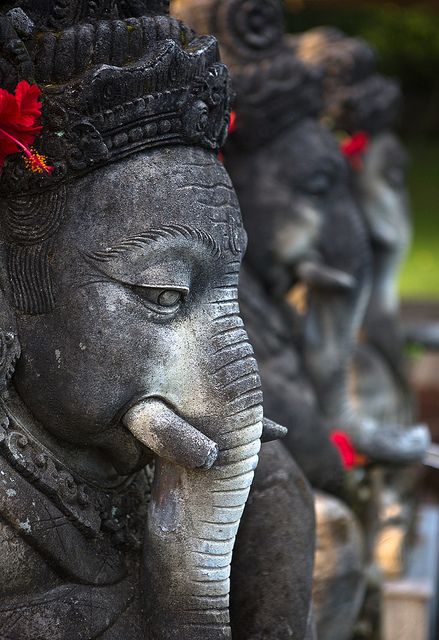
Kanchi Ganesha Temple-The deity is also referred to as Bhanda Ganesha. Located on the Western side of the temple premise, this temple houses an image that is said to have been brought from Kanchi by Gajapati Purushottama Deva during his Kanchi expedition. The deity is depicted as four-armed, with the image of his consort placed on his lap. Due to the deity’s erotic nature, the image is thought to be a Tantric representation.
Kalpabata (Tree)– Within the inner enclosure of the temple, on its southern side, stands a majestic banyan tree known as ‘Kalpabata.’ This ancient tree is prominently featured in both the Skanda Purana and Brahma Purana. According to local beliefs, individuals who circumambulate the sacred Kalpabata and step on its shadow are believed to attain ‘Kesavalaya,’ signifying the divine abode of Vishnu. The tree, steeped in mythological significance, serves as a serene spot for devotees to engage in spiritual practices and rituals.
Rohini Kunda (Pool)–As per the Skanda Purana, within the navel region of this sacred site, you will find three significant elements: the Rohini Kunda, the Kalpabata, and the divine image. The Rohini Kunda, a revered pool, is located slightly to the west of the banyan tree, considered sacred due to the presence of Vishnu and Lakshmi. Presently, the pool is manifested as a stone water-vat, devoid of natural water. Within this vat, two carvings are featured in separate squares—one depicting the Nila Chakra of Vishnu, and the other portraying a four-handed crow. You receive blessings as water is poured and sprinkled from this symbolic representation.
Mukti Mandapa (Brahmasana)–You will find the Mukti Mandapa to be a structure measuring 38 feet in length and 38 feet in width, forming a square shape with 16 pillars. According to Madalapanji, historical records state that the renovation of this sacred space was carried out by Gourirani, the wife of Mansingh, the chief of the army of the Mughal Emperor Akbar. The Mukti Mandapa holds significance as a place where Brahmin pandits from specific villages, Dandi sanyasis, Jagadguru Sankaracharya, Deula Purohita, and Rajgurus are granted the privilege to sit.

The Divine Kitchen or Roshanara– One of the most fascinating aspects of the Jagannath Temple is its mega kitchen, known as the Rosaghora. This kitchen is recognized as the world’s largest Satvik kitchen, where food is prepared following traditional Hindu culinary practices. Over 1,000 dedicated cooks work tirelessly to prepare 56 different types of offerings, collectively known as Chhappan Bhog, which are served to the deities six times a day. The kitchen is spread over an acre and is believed to be supervised by the goddess Mahalakshmi herself.
Do Read: Exploring the Cultural Tapestry: Raghurajpur Heritage Village
The Sacred Mahaprasada of Puri Jagannath Temple
The Mahaprasada, the divine offering of the Jagannath Temple, holds a special place in the hearts of devotees. After being offered to Lord Jagannath, the food becomes sanctified, and it is then made available to the devotees as Mahaprasada. Traditional rituals are followed during the offering, and the food is served on banana leaves. Pilgrims can savor the Mahaprasada in the Ananda Bazar area or opt for priests to deliver packets of Mahaprasada to their accommodations. The assortment of dishes includes various rice preparations, vegetable curries, lentil dishes, and sweet delicacies.
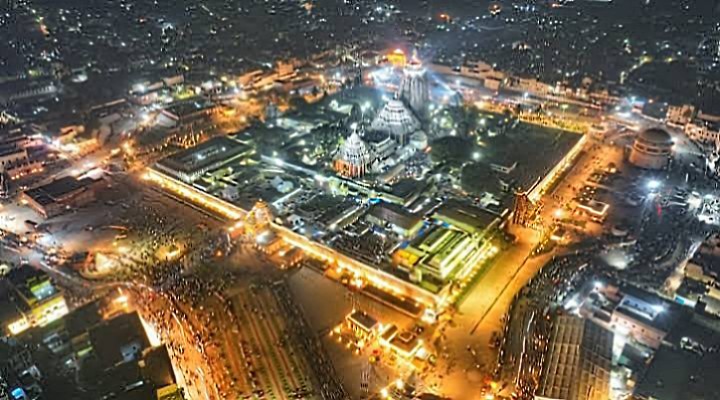
The Parikrama Project or Heritage Corridor
The Shree Jagannath Parikrama Prakalp, also known as the heritage corridor project, aims to transform Puri into a world-class city while preserving its cultural heritage. The project involved the construction of a 75-meter corridor around the temple, providing unobstructed views and enhancing the overall experience for devotees. The project was inaugurated and opened to the public recently.
The heritage corridor features terraced landscapes, a Parikrama pathway, gardens showcasing local varieties of trees and shrubs, cloakrooms, drinking water fountains, toilets, and information-cum-donation kiosks. Additionally, a grand reception center with a capacity of 6,000 people and queue management facilities will be built to ensure a seamless visit for devotees.
The Parikrama project represents a significant milestone in the temple’s ongoing development and its journey towards becoming a world-class spiritual destination.
Dress Code and Code of Conduct
To maintain the sanctity of the Puri Jagannath Temple, a dress code has been implemented for devotees. Proper attire is expected, and visitors wearing half pants, shorts, torn jeans, skirts, or sleeveless dresses are not permitted to enter the temple premises. Devotees are advised to dress modestly and respectfully, keeping in mind the sacredness of the place.
In addition to the dress code, the temple administration has also imposed certain rules and regulations to ensure a peaceful and harmonious environment for all visitors. Chewing gutkha and pan is strictly prohibited within the temple premises, and the use of plastic and polythene has been banned to promote environmental sustainability.

Also Read: 10 must-visit temples of Bhubaneswar
How to Reach Puri Jagannath Temple
Puri is located in the eastern state of Odisha and is well-connected by air, rail, and road networks. The nearest airport is Biju Patnaik International Airport in Bhubaneswar, approximately 60 kilometers away from Puri. From the airport, one can hire a taxi or take a bus to reach Puri.
Puri also has its own railway station, which is well-connected to major cities across India. Regular trains operate to and from Puri, making it a convenient mode of transportation for devotees and tourists.
For those traveling by road, Puri is connected to various cities in Odisha and neighboring states through a well-maintained road network. State-run buses, private taxis, and car rentals are readily available for transportation within the city.
Visiting Hours and Entry Fees
The Puri Jagannath Temple is open to devotees and visitors from 5:00 AM to midnight. To avoid large crowds, it is advisable to visit early in the morning around 7:00 AM or after 9:00 PM. The serene ambiance during these hours enhances the spiritual experience. There are no entry fees to visit the temple.
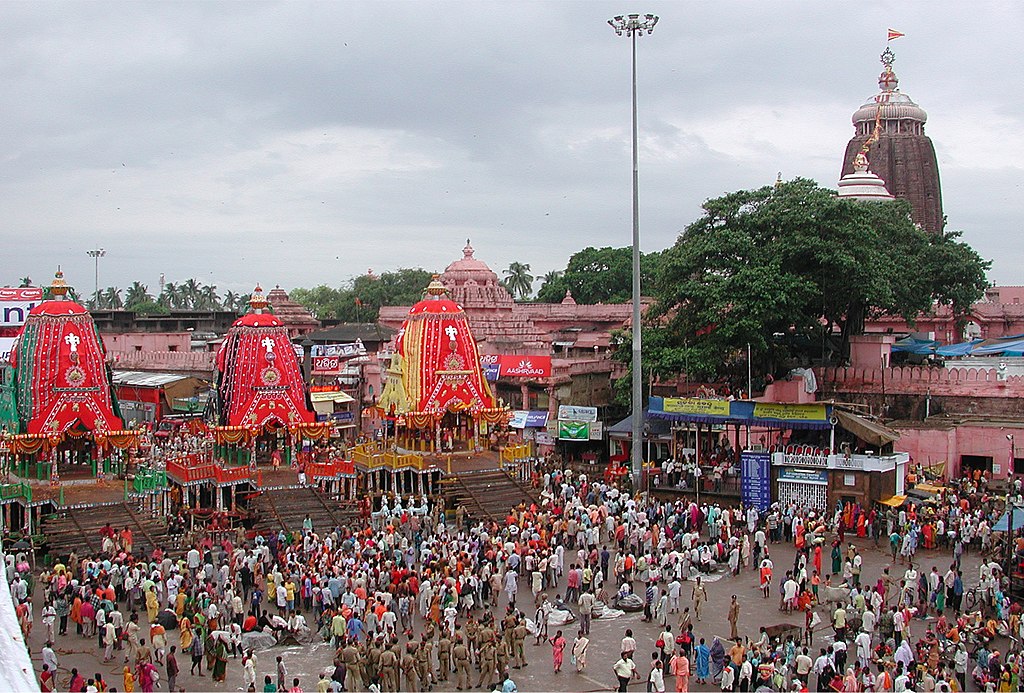
Important Rituals and Festivals
The Puri Jagannath Temple is known for its rich tradition of rituals and festivals. Devotees can witness and participate in various ceremonies that take place throughout the year. Some of the significant rituals include the daily rituals of bathing, dressing, and offering food to the deities. The temple follows a strict schedule of rituals, reflecting the daily routine of Lord Jagannath.
One of the most prominent festivals celebrated at the temple is the Rath Yatra, also known as the Chariot Festival. During this grand event, the deities are taken out of the temple in elaborately decorated chariots and pulled by devotees through the streets of Puri. The Rath Yatra attracts millions of devotees who come to witness this spectacular procession. Other significant festivals include Chandan Yatra, Snan Yatra, Anavasara, and Nava Kalebara.
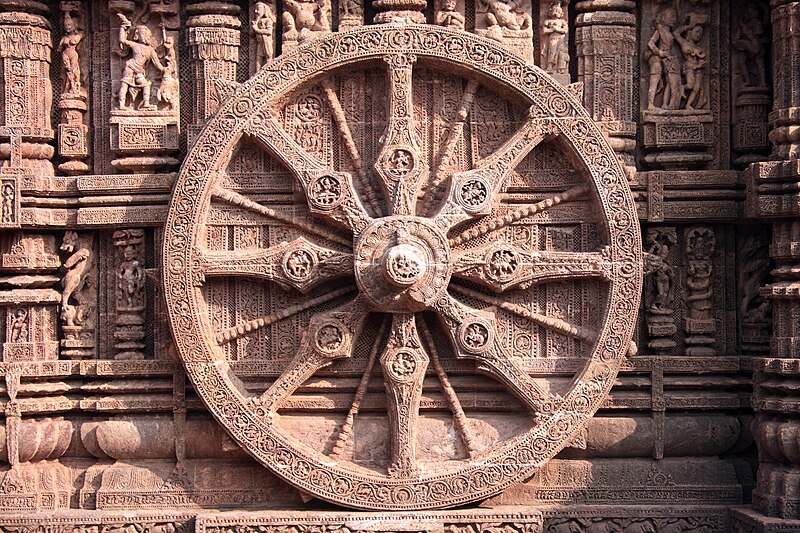
Other Places of Interest near Puri
While in Puri, make sure to explore the other attractions the city has to offer. Some notable places to visit near Puri include:
- Raghurajpur Handicraft Village: Located just a short drive from Puri, this village is known for its artisans and traditional crafts, particularly Pattachitra paintings.
- Konark Sun Temple: A UNESCO World Heritage Site, the Konark Sun Temple is a magnificent example of ancient Indian architecture and is a must-visit for history and culture enthusiasts.
- Puri Beach: The bustling Puri Beach is a popular destination for both locals and tourists. Enjoy a leisurely stroll along the shore or indulge in water activities.
- Chilika Lake: Located near Puri, Chilika Lake is the largest brackish water lagoon in Asia and a haven for bird-watching and boating enthusiasts.
Tips for Visiting Puri Jagannath Temple
- Plan your visit during the off-peak season to avoid crowds and long queues.
- Respect the religious customs and traditions of the temple. Avoid touching the deities or offering any personal belongings inside the temple.
- Follow the instructions of the temple priests and authorities to maintain order and decorum.
- Be cautious of unauthorized individuals who may try to extract money or offer unsolicited services. It is advisable to ignore such individuals and seek assistance from the temple administration if needed.
- Take off your shoes and deposit any belongings, including mobile phones and leather items, at the designated storage facility near the temple entrance.

Do Read: Visiting Bhubaneswar? The Khandagiri and Udayagiri Caves are a Must-See
Accommodation Options
Puri offers a range of accommodation options to suit various budgets and preferences. From luxury resorts and hotels to budget-friendly guesthouses and lodges, there is something for every traveler. Some popular options include Pramod Convention & Beach Resort, Mayfair Waves, Balaji International, and Hotel Pushpa. It is advisable to book accommodation in advance, especially during peak seasons and festivals.
Conclusion
The Puri Jagannath Temple beckons you not only as a place of worship but as a cultural and spiritual landmark, enchanting devotees and visitors for centuries. Delve into its fascinating history, marvel at its awe-inspiring architecture, and experience ongoing development projects amidst a vibrant atmosphere.
Your visit promises a lifetime experience – immerse yourself in the divine aura, witness grand rituals, and embrace the spiritual energy that fills the air. A journey to the Puri Jagannath Temple is a journey to the heart of Hindu spirituality, inviting you to explore its profound significance and cultural richness.

